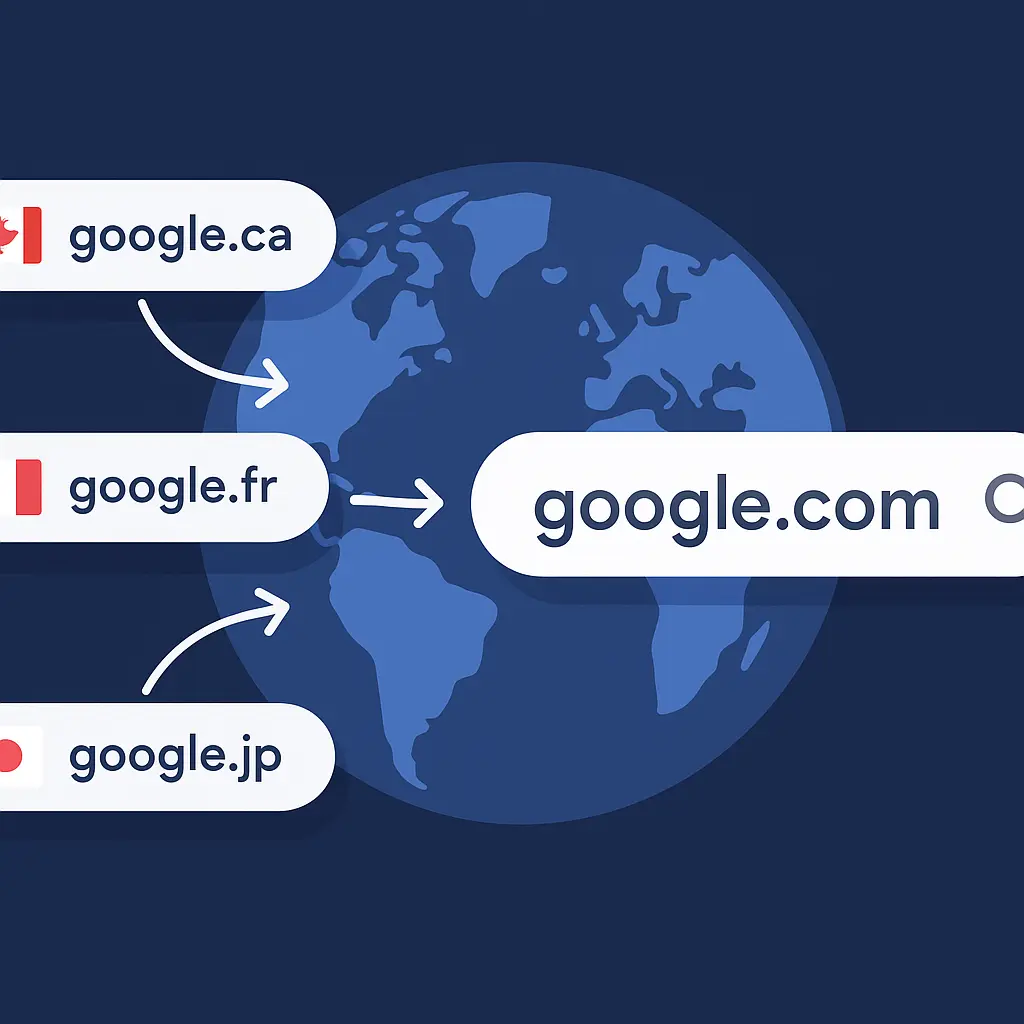Google Domain Change & Hreflang Tags: SEO Impact Explained
The recent Google Domain Change involves transitioning all country-specific domains (such as google.ca or google.fr) to a single central domain—Google.com. This move marks a significant shift in how Google presents itself globally. However, the company assures that this change will not impact current international SEO strategies.
What’s Changing in Google’s Domain Structure?
Google is phasing out ccTLDs like .fr, .jp, or .ca for automatic redirects to google.com. Google invokes the changes in offering localized experiences as the rationale. Users had already been viewing local results since 2017 when they accessed google.com, which renders country-specific individual domains less consequential.The tech giant is emphasizing that even with this domain consolidation, it will still provide regionally attuned content to users depending on where they are. This implies that the regional personalization algorithm has matured to a level that ccTLDs are no longer required to play that function.
Effects on Referral Traffic and Statistics
With traffic being directed through google.com instead of regional domains of the site, SEO practitioners can anticipate some variation in their patterns of referral traffic. Web analytics might start to report more traffic from google.com internationally instead of reporting traffic between regional domains. This means that marketers and businesses need to understand how traffic is broken down on their analytics tools and may have to adjust their interpretation of international visitor data accordingly
The Hreflang Debate: Any Real Change?
With the shift in domain handling, it is inevitable to ask yourself what will occur to hreflang tags, which are used to facilitate search engines to identify language and region targeting of web pages. Speculation by some search engine optimization specialists is that this could lead to a more automatic type of international SEO where Google’s artificial intelligence is better placed to identify language and region without human tagging. Given the ongoing Google Domain Change, the role of hreflang tags has become an even more discussed topic among SEO professionals. This rumor was taken up again when Google’s Gary Illyes referred to an intention to move forward toward fewer site annotations and more machine-learned signals. However, John Mueller of Google has publicly stated that nothing has shifted in the matter of how Google approaches hreflang tags or global SEO strategies.
Therefore, the use of hreflang is as legitimate and valuable for websites targeting multiple languages or regions until further notice.
What SEO Experts Should Do Immediately
While Google has faith in its own infrastructure, this roll-out reminds SEO experts to:
- Continue using hreflang so that search engines effectively recognize language and geographic targeting.
- Double-check language signals and confirm site content is strongly indicative of its target audience.
- Monitor traffic patterns shifts, especially during the cutover, to observe how the domain move may affect site performance metrics.
It should be noted that the consolidation of its own domains by Google is a branding and business decision, and not a recommended SEO tactic. Small businesses that have clear-cut regional targets still benefit from using separate country-level domains or subdirectories.
Final Thoughts
Google’s transition to single domain structure is one aspect of its long-term plan to unify its branding and user experience across the globe. While it may create interest about how international SEO will evolve, Google made sure that core practices like hreflang are not impacted for now.
SEO professionals should realize this shift as an evolution, not a disruption, as one part of the ongoing evolution in the treatment of international content by search engines. Paying close attention to how the shift affects user behavior, referral traffic, and exposure will help businesses successfully evolve without sacrificing reach or relevance locally.
Stay Updated with Daily News— Click Here to Explore More


Heya i am for the first time here. I found this
board and I find It truly useful & it helped me out a lot.
I hope to give something back and aid others like you aided me.
Very good post! We will be linking to this great content on our website.
Keep up the great writing.